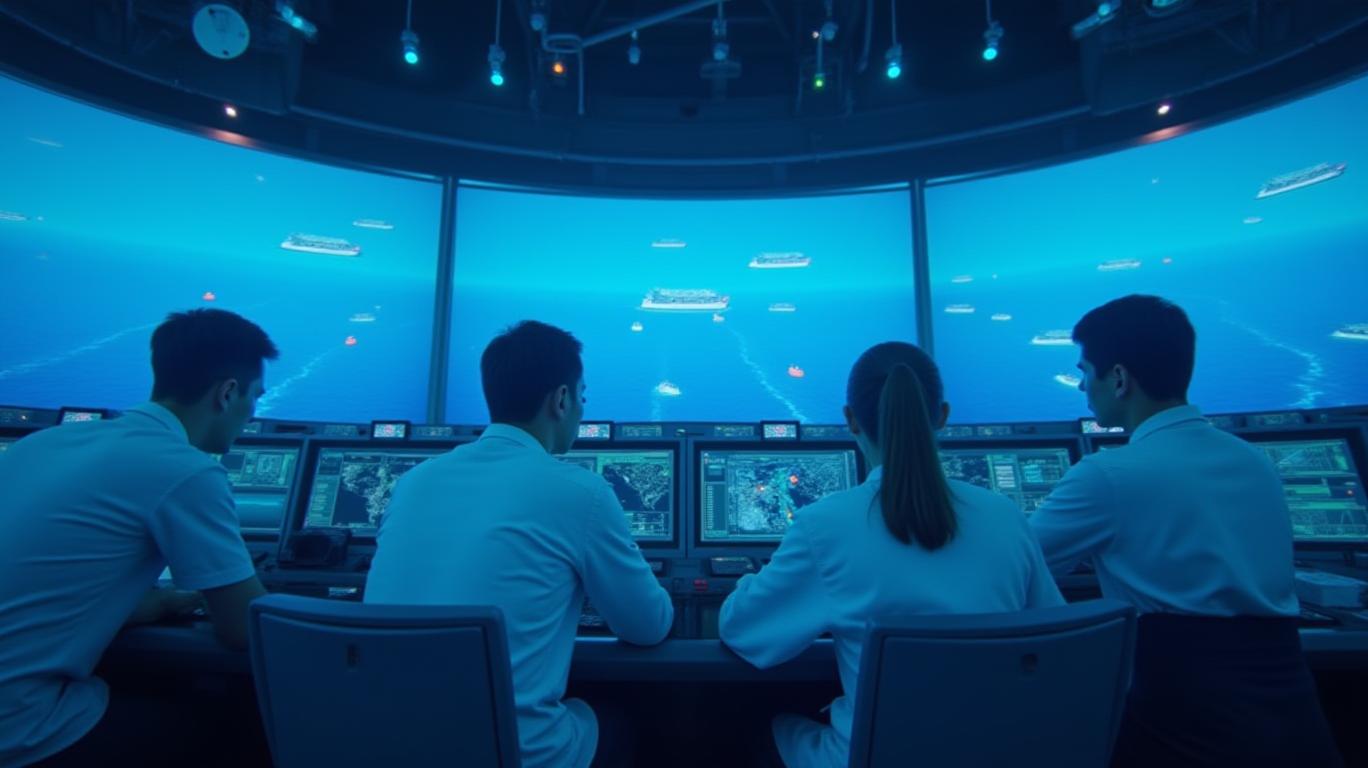Navigating the Next Wave of Maritime Safety: Why Collision-Avoidance Tech and Infrastructure Resilience Stocks Are Set to Surge
The collision of Mexico’s training ship Cuauhtémoc with New York’s Brooklyn Bridge on May 17, 2025, was a stark reminder of the vulnerabilities in maritime safety and aging infrastructure. The incident, caused by a mechanical failure that led to a loss of control, resulted in 19 injuries, two deaths, and a near-disastrous structural scare for a 142-year-old
. While the Brooklyn Bridge escaped major damage, the accident has ignited a global regulatory reckoning. Governments and industry leaders are now demanding stricter safety protocols for maritime navigation systems and infrastructure resilience—a shift that creates golden investment opportunities in AI-powered collision detection and infrastructure reinforcement technologies.The Regulatory Tsunami: Why Safety Standards Are About to Explode
Senator Chuck Schumer’s pointed criticism of U.S. Coast Guard budget cuts and the failure of the Vehicle Traffic Service (VTS) system highlights systemic risks. The Cuauhtémoc incident exposed flaws in both human oversight (e.g., lack of tugboat guidance) and technological gaps (e.g., inadequate real-time collision detection). In response, policymakers are accelerating reforms:
- Mandatory AI Navigation Systems: The U.S. Coast Guard has proposed requiring AI-driven collision avoidance systems for all commercial vessels, including tall ships, by 2027.
- Infrastructure Stress Tests: The Federal Highway Administration is mandating structural audits for bridges over 50 years old, with penalties for non-compliance.
- Global Standards: The International Maritime Organization (IMO) is drafting stricter guidelines for tall ship tourism operators, prioritizing predictive maintenance and real-time sensor integration.
These regulations aren’t just about avoiding disasters—they’re creating a multi-billion-dollar market for companies that can future-proof maritime safety and infrastructure.
The Tech to Beat the Tide: AI Collision Detection Leaders to Watch
The collision has cemented AI as the critical tool to prevent future disasters. Here are the front-runners in collision detection systems, poised to capture market share as regulations tighten:
Waymo (Alphabet Inc.)
Waymo’s Driver System uses LIDAR, radar, and cameras to predict collisions in real time—a technology easily adaptable for maritime use. Its autonomous driving algorithms could be repurposed for ships, offering 360-degree environmental awareness.
Mobileye (Intel Corporation)
Mobileye’s EyeQ SoC chip processes visual data for object detection, making it ideal for retrofitting older ships with AI vision systems. Its partnership with the U.S. Coast Guard for maritime VTS upgrades signals strategic positioning.
Nauto (Series C-funded startup)
Nauto’s AI-driven driver monitoring and predictive alerts are already deployed in commercial fleets. Its expansion into maritime applications could make it a category disruptor in the $12B maritime tech market.

Reinforcing the Foundation: Infrastructure Resilience Stocks to Buy Now
The Cuauhtémoc incident also underscores the fragility of aging infrastructure. Bridges, ports, and energy systems must withstand rising seas, extreme weather, and human error. These companies are leading the charge in durability innovations:
WSP USA
WSP’s Future Ready© framework designs climate-resilient infrastructure, including flood barriers and earthquake-proof foundations. Its work on Miami’s coastal defenses and the Brooklyn Bridge’s post-collision monitoring system positions it as a regulatory darling.AquaFence
Deployable flood barriers like AquaFence’s modular systems can protect ports and bridges during storms. With 3.5 million U.S. properties at flood risk, this company is a hidden gem in disaster preparedness.Tesla (TSLA)
Tesla’s Megapack energy storage ensures critical infrastructure (e.g., port systems) stays operational during grid outages. Its Powerwall also secures emergency lighting for maritime facilities.
Why Act Now? The Perfect Storm for Growth
- Regulatory Tailwinds: Mandates for AI systems and infrastructure upgrades will force adoption, creating recurring revenue streams for tech providers.
- Global Demand: Tall ship tourism, valued at $1.8B annually, faces stricter safety rules—operators will need retrofitting solutions.
- Geopolitical Push: Post-Trump 2.0, the U.S. is rejoining global climate accords, accelerating investment in resilient infrastructure.
Investment Thesis: Buy stocks in AI navigation leaders (Waymo, Mobileye) and infrastructure resilience firms (WSP, Tesla) now. These companies are not just adapting—they’re defining the future of maritime safety and infrastructure durability.
Final Call to Action
The Brooklyn Bridge collision was a wake-up call. For investors, it’s a call to position in the winners of the next regulatory era. AI collision detection and infrastructure resilience are no longer optional—they’re the new normal. Don’t miss the wave.

Comments
No comments yet